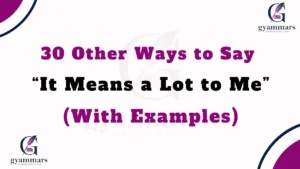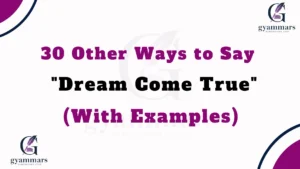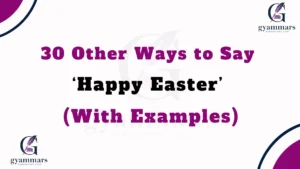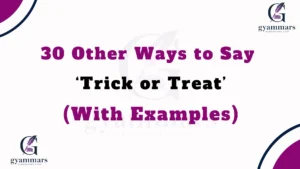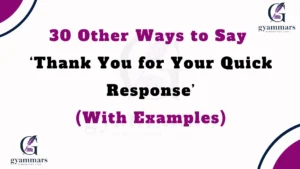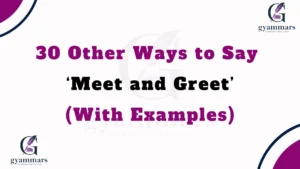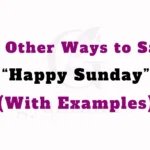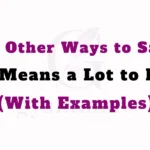When communicating, the choice of words can make a significant difference in how your message is received. Using meaningful and thoughtful phrases instead of the standard “Please see attached” can help create a more personal and warm connection with the recipient.
Whether you are sending an email, a report, or a presentation, expressing care in your tone can foster more positive and cooperative interactions. Below, we’ve compiled 30 alternatives to “Please see attached,” along with detailed explanations, scenarios, and tips on how to use them effectively.
What Does “Please See Attached” Mean?
“Please see attached” is a commonly used phrase in business and personal emails to inform the recipient that a file or document has been included in the message. It’s a polite way to direct attention to additional information, though it can sometimes feel a bit formal or impersonal. Finding alternative expressions can convey a similar message with more warmth or specificity.
Is It Professional/Polite to Say “Please See Attached”?
Yes, saying “Please see attached” is generally considered professional and polite. It’s a neutral, clear way to inform someone of an attachment. However, it can come across as formulaic and lacking in personality. Depending on the context, a more engaging or considerate phrasing may be more appropriate, especially when you’re trying to create a positive rapport or convey care.
Pros and Cons of “Please See Attached”
Pros:
- Clear and straightforward: It directly communicates the presence of an attachment.
- Professional: It’s commonly used in formal communication.
- Neutral: Works in most scenarios without being overly casual or overly formal.
Cons:
- Lacks warmth: It can feel impersonal or distant.
- Formulaic: Overuse can make your communication seem robotic or lack personality.
Synonyms For “Please See Attached”
- Kindly refer to the attached
- Attached for your review
- Please find the attached
- I have attached the file for your consideration
- Attached is the [document name]
- Please find attached for your convenience
- Enclosed is the attachment
- I’ve included the document for your reference
- Here is the attached
- I’ve sent the attached document for your perusal
- Please take a look at the attached
- The document is attached for your reference
- You’ll find the attached document below
- As discussed, I have attached…
- Please find enclosed
- I’ve attached the requested file
- The requested document is attached
- I have attached the relevant files
- I’ve shared the document as an attachment
- Attached is the document we discussed
- I’ve attached the necessary details
- Here’s the file you asked for
- You’ll find the attachment below
- I have included the document for your review
- Please find the enclosed file
- I have added the attachment for your convenience
- Attached is the file you need
- The attachment contains all the relevant information
- I’ve sent over the attached document for your reference
- The attached document should be helpful
1. Kindly refer to the attached
Definition: A polite and gentle way of requesting the reader to check the attached file.
Explanation: This phrase adds an extra layer of courtesy, making the request feel more thoughtful and respectful.
Scenario Example: “Kindly refer to the attached report for more details on the project’s progress.”
Best Use: When you want to express politeness while remaining professional.
Tone: Warm, respectful, professional.
Additional Notes: A gentle yet firm way to ask for someone’s attention to the attachment.
2. Attached for your review
Definition: Directs the recipient’s attention to the attachment, suggesting that it requires their evaluation.
Explanation: This phrase implies that the attached document needs to be looked at carefully, perhaps in the context of feedback or analysis.
Scenario Example: “Attached for your review is the proposal draft. Please let me know your thoughts.”
Best Use: When you’re sending something that needs to be reviewed or examined.
Tone: Professional, courteous.
Additional Notes: It’s perfect for situations where feedback or review is expected.
3. Please find the attached
Definition: A traditional phrase commonly used in business communication to point out an attachment.
Explanation: This phrase is a simple, polite way to refer to an attachment without feeling too formal or stiff.
Scenario Example: “Please find the attached invoice for your reference.”
Best Use: When sending straightforward documents that don’t need extensive explanation.
Tone: Neutral, professional.
Additional Notes: It works well in both formal and informal emails.
4. I have attached the file for your consideration
Definition: A courteous way of indicating that an attachment requires the recipient’s thought or assessment.
Explanation: This phrase gives the impression that you’re respectfully asking the recipient to give some attention to the attached file.
Scenario Example: “I have attached the file for your consideration and look forward to your feedback.”
Best Use: Ideal when you want to show that the attachment might require thought or decision-making.
Tone: Respectful, professional.
Additional Notes: It can also imply that the content is important and warrants careful review.
5. Attached is the [document name]
Definition: A clear and straightforward way to inform the recipient that a document is attached.
Explanation: This phrase is functional, mentioning the specific document name, making it very direct and easy to follow.
Scenario Example: “Attached is the marketing plan for Q2.”
Best Use: When you want to mention the specific document clearly without being too formal.
Tone: Neutral, informative.
Additional Notes: It’s best for professional settings where clarity is key.
6. Please find attached for your convenience
Definition: A polite way to indicate that the attachment is provided for the recipient’s ease or reference.
Explanation: This phrase adds a helpful tone, as if you are making the process easier for the reader.
Scenario Example: “Please find attached for your convenience the updated schedule.”
Best Use: When you want to highlight that the attachment makes something easier for the recipient.
Tone: Helpful, professional.
Additional Notes: Use when you want to show that the attached information is there to support the recipient.
7. Enclosed is the attachment
Definition: A formal way of referring to the included document or file.
Explanation: Often used in letters or more formal communication, this phrase suggests that the attachment is part of the content being shared.
Scenario Example: “Enclosed is the attachment for your reference.”
Best Use: Best for formal letters or highly professional emails.
Tone: Formal, professional.
Additional Notes: Slightly more formal than “attached.”
8. I’ve included the document for your reference
Definition: A warm and friendly way to mention that a document has been added for the recipient’s reference.
Explanation: This phrasing focuses on the idea that the recipient may find the document helpful for context or understanding.
Scenario Example: “I’ve included the document for your reference. Let me know if you have any questions.”
Best Use: When sending reference material or context-based documents.
Tone: Friendly, helpful.
Additional Notes: It implies that the attached file is there to help, without pressing the recipient for immediate action.
9. Here is the attached
Definition: A casual but polite way to share an attachment.
Explanation: This phrase is less formal but still appropriate for most settings, especially when you want to make it sound approachable.
Scenario Example: “Here is the attached file with all the details you need.”
Best Use: Suitable for casual or semi-formal communication.
Tone: Friendly, approachable.
Additional Notes: It’s best used when you already have an established rapport with the recipient.
10. I’ve sent the attached document for your perusal
Definition: A refined and courteous way of pointing out that a document has been shared for the recipient’s careful examination.
Explanation: This phrasing implies that the recipient’s careful reading or attention is appreciated.
Scenario Example: “I’ve sent the attached document for your perusal and await your response.”
Best Use: When the recipient is expected to read or assess the attachment thoroughly.
Tone: Polite, formal.
Additional Notes: Use in formal contexts where careful attention is required.
11. Please take a look at the attached
Definition: A friendly and inviting way to direct someone’s attention to an attachment.
Explanation: This phrase suggests that the recipient should review the document in a relaxed manner without pressure.
Scenario Example: “Please take a look at the attached proposal and share your thoughts.”
Best Use: When you want to keep your email conversational and engaging.
Tone: Friendly, inviting.
Additional Notes: Works well when requesting feedback in a casual but professional setting.
12. The document is attached for your reference
Definition: A polite and neutral way to highlight that an attachment is included for informational purposes.
Explanation: This phrase reassures the recipient that the attachment is there for their convenience and reference.
Scenario Example: “The document is attached for your reference. Let me know if you need further clarification.”
Best Use: Best when sending supporting materials for context.
Tone: Professional, neutral.
Additional Notes: It does not suggest urgency but rather that the attachment might be useful.
Read More: 30 Other Ways to Say “Have a Good Day” (With Examples)
13. You’ll find the attached document below
Definition: A soft and friendly way to guide the recipient to the attachment.
Explanation: This phrase makes the request sound less like a command and more like an offering.
Scenario Example: “You’ll find the attached document below. Let me know if you have any questions.”
Best Use: When you want to maintain a conversational and warm tone.
Tone: Friendly, approachable.
Additional Notes: It makes the attachment feel like a helpful resource rather than an obligation.
14. As discussed, I have attached…
Definition: A professional phrase that connects the attachment to a prior conversation.
Explanation: This phrase reminds the recipient that the attachment relates to something previously mentioned.
Scenario Example: “As discussed, I have attached the finalized contract for your signature.”
Best Use: When following up on previous discussions or agreements.
Tone: Professional, efficient.
Additional Notes: Helps provide context and continuity in email communication.
15. Please find enclosed
Definition: A more traditional and formal way to introduce an attachment.
Explanation: This phrase is often used in written letters but can also apply to email attachments.
Scenario Example: “Please find enclosed the requested documents for your records.”
Best Use: Ideal for formal business communication.
Tone: Formal, respectful.
Additional Notes: Often used in legal or official correspondence.
16. I’ve attached the requested file
Definition: A direct and professional way to indicate that an attachment has been sent.
Explanation: This phrase acknowledges that the recipient asked for the document.
Scenario Example: “I’ve attached the requested file for your review.”
Best Use: Best when responding to a request for a specific document.
Tone: Professional, responsive.
Additional Notes: This phrase reassures the recipient that their request has been fulfilled.
17. The requested document is attached
Definition: A formal and professional way to acknowledge an attachment.
Explanation: This phrase clearly states that the attached document was previously requested.
Scenario Example: “The requested document is attached for your review.”
Best Use: When fulfilling a specific request from the recipient.
Tone: Polite, professional.
Additional Notes: It ensures clarity and avoids unnecessary fluff.
18. I have attached the relevant files
Definition: A neutral way to indicate that an attachment is included.
Explanation: This phrase highlights that the attached files are related to the discussion.
Scenario Example: “I have attached the relevant files for your reference.”
Best Use: When sending multiple files that pertain to the conversation.
Tone: Neutral, professional.
Additional Notes: It keeps the email professional without sounding too formal.
19. I’ve shared the document as an attachment
Definition: A warm and engaging way to indicate that a file has been included.
Explanation: This phrase makes the attachment feel like a personal contribution rather than a formal obligation.
Scenario Example: “I’ve shared the document as an attachment. Let me know if you have any questions!”
Best Use: Best for collaborative or team settings.
Tone: Friendly, engaging.
Additional Notes: Works well when fostering a positive and cooperative tone.
Read More: 30 Other Ways to Say “I Look Forward to It” (With Examples)
20. Attached is the document we discussed
Definition: A professional and context-based way to indicate that an attachment relates to a previous discussion.
Explanation: This phrase provides continuity by referencing prior conversations.
Scenario Example: “Attached is the document we discussed during our last meeting.”
Best Use: When sending a file that was previously mentioned.
Tone: Professional, informative.
Additional Notes: Helps reinforce prior communication and avoids confusion.
21. I’ve attached the necessary details
Definition: A direct way to inform the recipient that relevant details have been included as an attachment.
Explanation: This phrase assures the recipient that all important information they need is in the attachment.
Scenario Example: “I’ve attached the necessary details for your reference. Let me know if you need anything else!”
Best Use: Best when sending essential documents or information.
Tone: Clear, professional.
Additional Notes: Works well when providing supporting materials for a discussion.
22. Here’s the file you asked for
Definition: A warm and conversational way to acknowledge a requested attachment.
Explanation: This phrase feels personal and acknowledges that the recipient specifically requested the file.
Scenario Example: “Here’s the file you asked for. Let me know if you need anything else!”
Best Use: When responding to a request for a specific document.
Tone: Friendly, helpful.
Additional Notes: Makes the interaction feel more engaging and natural.
23. You’ll find the attachment below
Definition: A simple and inviting way to guide the recipient toward the attachment.
Explanation: This phrase naturally directs the recipient to look at the attached file.
Scenario Example: “You’ll find the attachment below. Let me know if you have any questions!”
Best Use: When you want to maintain a polite and inviting tone.
Tone: Warm, professional.
Additional Notes: Works well in both formal and informal emails.
24. I have included the document for your review
Definition: A polite way to introduce an attachment meant for feedback or assessment.
Explanation: This phrase subtly suggests that the recipient should go through the document carefully.
Scenario Example: “I have included the document for your review. Please share your thoughts when you have a moment.”
Best Use: When requesting feedback or approval.
Tone: Professional, courteous.
Additional Notes: Ideal for collaborative or review-based work.
25. Please find the enclosed file
Definition: A slightly more formal way to indicate that an attachment has been included.
Explanation: “Enclosed” sounds more traditional and is often used in business letters and emails.
Scenario Example: “Please find the enclosed file containing the contract details.”
Best Use: When sending official documents or legal paperwork.
Tone: Formal, professional.
Additional Notes: Works well for legal and official business communication.
26. I have added the attachment for your convenience
Definition: A polite and thoughtful way to highlight the attachment.
Explanation: This phrase conveys that the attachment is meant to make things easier for the recipient.
Scenario Example: “I have added the attachment for your convenience. Let me know if you have any trouble accessing it.”
Best Use: When you want to emphasize that the document is provided to help the recipient.
Tone: Considerate, professional.
Additional Notes: It adds a helpful and warm touch to your communication.
27. Attached is the file you need
Definition: A straightforward way to ensure the recipient knows the necessary document is included.
Explanation: This phrase is clear and ensures there’s no ambiguity about the attachment’s relevance.
Scenario Example: “Attached is the file you need for the presentation.”
Best Use: When sending an essential file for the recipient’s task.
Tone: Direct, professional.
Additional Notes: Keeps the email to the point while still being polite.
28. The attachment contains all the relevant information
Definition: A phrase that reassures the recipient that everything they need is in the attachment.
Explanation: This phrase helps eliminate any doubt about whether the attachment has all necessary details.
Scenario Example: “The attachment contains all the relevant information about the project timeline.”
Best Use: When sending detailed documents that fully address a topic.
Tone: Professional, informative.
Additional Notes: Encourages the recipient to go through the file thoroughly.
29. I’ve sent over the attached document for your reference
Definition: A slightly casual way of directing attention to an attachment.
Explanation: This phrase makes it sound as if the attachment is being personally sent over for the recipient’s benefit.
Scenario Example: “I’ve sent over the attached document for your reference. Let me know if you need any clarifications!”
Best Use: Best when sending reference materials or resources.
Tone: Warm, friendly.
Additional Notes: Works well when maintaining a conversational yet professional tone.
30. The attached document should be helpful
Definition: A considerate way to indicate that the attachment is useful.
Explanation: This phrase subtly assures the recipient that the attachment is valuable.
Scenario Example: “The attached document should be helpful in answering your questions about the process.”
Best Use: When sending something informative or instructional.
Tone: Encouraging, thoughtful.
Additional Notes: Shows that you’ve considered the recipient’s needs and are providing something useful.
Conclusion
Choosing the right words when sending an attachment can make a significant impact on how your message is received. Whether you want to sound warm, formal, polite, or engaging, using alternatives to “Please see attached” helps create a more personal and thoughtful communication experience.
By adjusting your phrasing based on the context, audience, and purpose of your email, you can ensure that your message resonates well with the recipient while maintaining clarity and professionalism.
FAQs
1. Is it correct to say “Please see attached”?
Yes, it is grammatically correct, but it may sound slightly formal or outdated. Alternative phrases can make your email more natural.
2. What is a more polite way to say “Please see attached”?
You can say, “I have attached [document name] for your review.” or “Attached is [document name] for your reference.”
3. Should I mention the attachment in the email body?
Yes, it’s best to mention the attachment in the email body so the recipient knows what to expect and why it’s important.
4. What should I do if I forget to attach the file?
You can send a follow-up email saying: “Apologies, I forgot to attach the document. Please find it attached now.”
5. How do I professionally ask someone to check the attachment?
You can say, “Please review the attached file and let me know your thoughts.” or “Kindly go through the attached document at your convenience.”

“Emma Brooke at Grammar Synonyms is your trusted source for mastering the art of language. Whether you’re looking for the perfect synonym, refining your grammar, or searching for that one ideal phrase, we’ve got you covered. With a wealth of tools and resources, Emma Brooke brings you creative solutions for all your writing needs, making sure your words always hit the mark. Unlock a world of language possibilities and elevate your writing with ease.”


